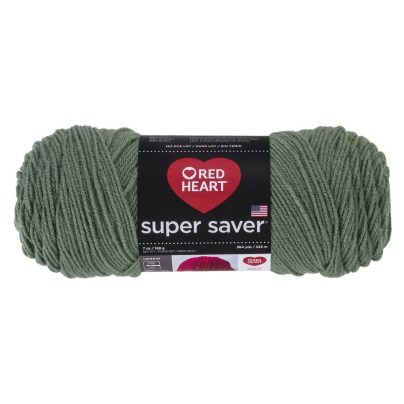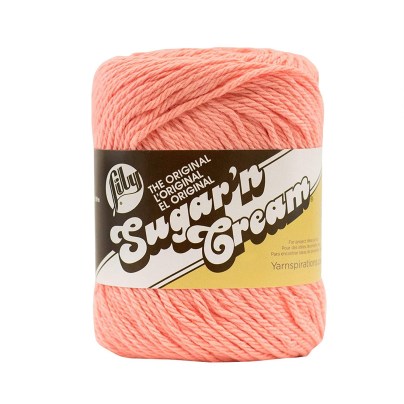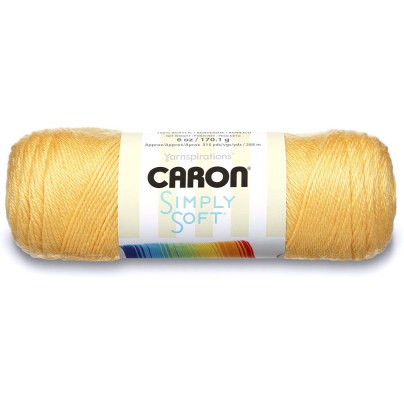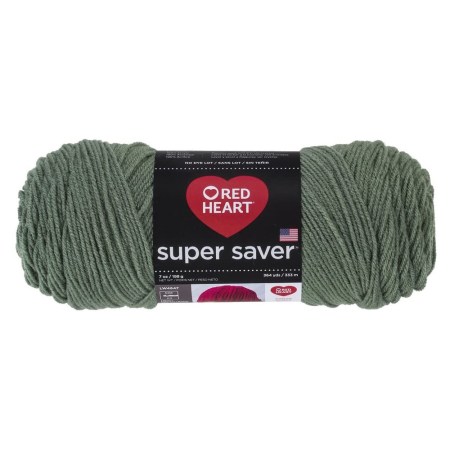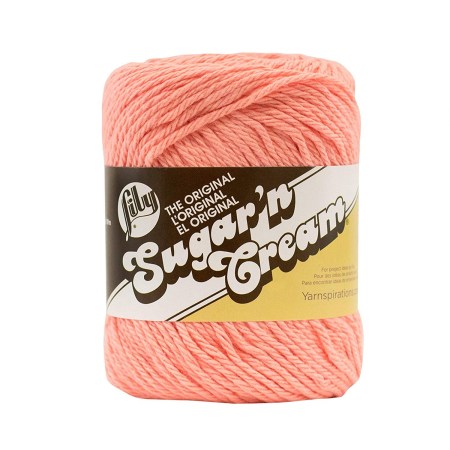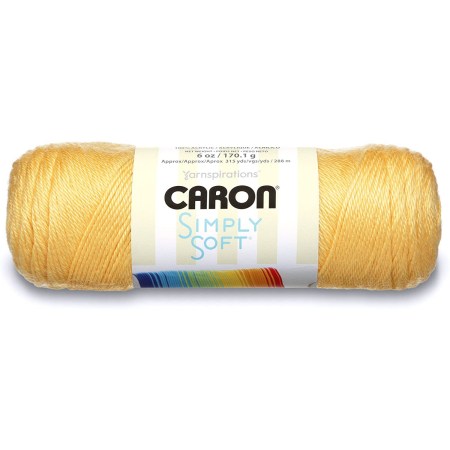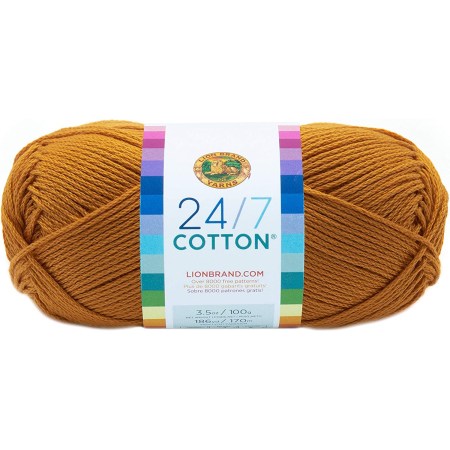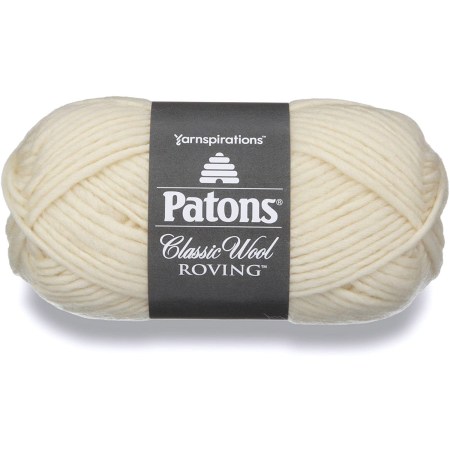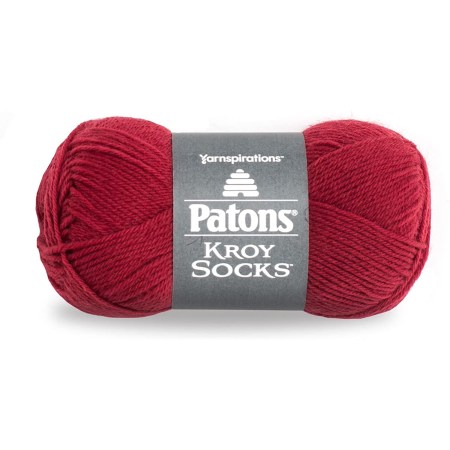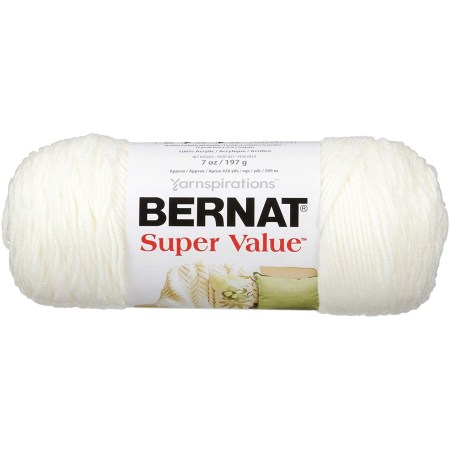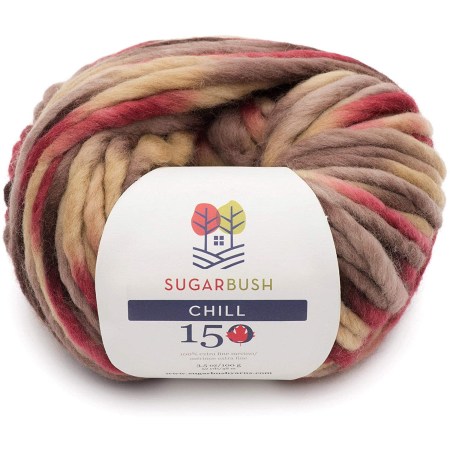We may earn revenue from the products available on this page and participate in affiliate programs. Learn More ›
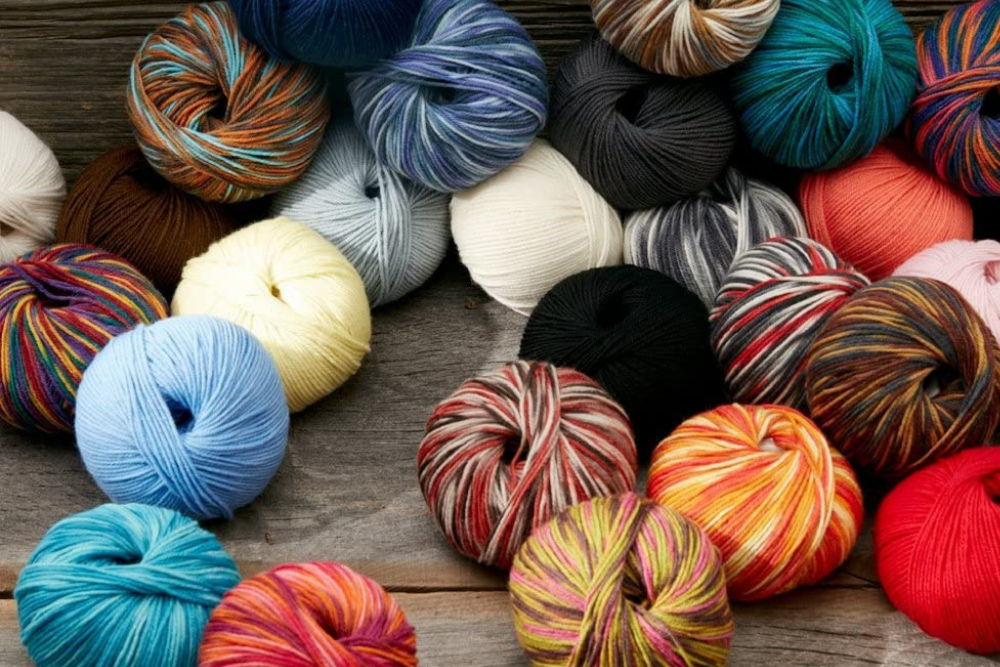
Yarn is a versatile material used in knitting, crocheting, needlepoint, embroidery, and weaving, among other crafts, to create a host of decorative and wearable pieces. Not all yarns, however, are created equally. There are a number of considerations to weigh when choosing yarn for a project, so read on to learn about the features to look for and why the following products rate as some of the best yarn in a range of categories.
- BEST OVERALL: Red Heart Super Saver Yarn
- BEST BANG FOR THE BUCK: Lily Sugar ‘N Cream The Original Solid Yarn
- BEST ACRYLIC: Caron Simply Soft Yarn
- BEST COTTON: Lion Brand Yarn 761-158 24-7 Cotton Yarn
- BEST WOOL: Patons Classic Wool Roving Yarn
- BEST LIGHTWEIGHT: Patons Kroy Socks Yarn
- BEST MEDIUM WEIGHT: Bernat Super Value Yarn
- BEST BULKY: Sugar Bush Yarn Chill Extra Bulky Weight
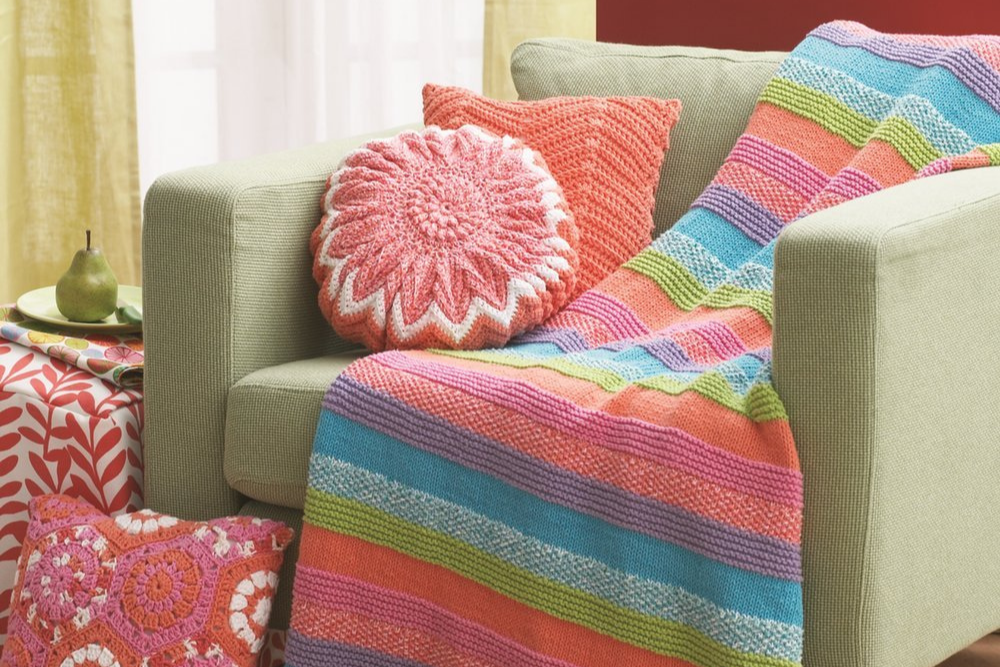
Types of Yarns
Yarn may be made of either plant-based, animal-based, or synthetic fibers. While many yarns consist of a single type of fiber, different fibers can also be blended, and the percentages of each will be clearly listed on the label.
Plant Fibers
Yarns woven from plant-based fibers tend to be soft, breathable, and insulating.
- Cotton is popular because of its soft texture and ready availability.
- Linen is derived from the flax plant and makes for thin, breathable fabric.
- Hemp is a renewable resource and makes for tough fabric that doesn’t crease.
- Bamboo is a plant-based material with antibacterial properties that wicks moisture.
Animal Fibers
Animal-derived fibers are prized for their natural, luxurious feel. They tend to be more expensive than plant-derived or synthetic fibers and are used in making high-end products.
- Alpaca fleece is dense and hypoallergenic.
- Angora comes from the fur of Angora rabbits and is silky and soft.
- Bison down is warm and insulating.
- Camel hair is often blended with wool and insulates well.
- Cashmere is obtained from goats and feels soft and luxurious.
- Llama fibers, taken from the animals’ fine undercoats, are lightweight and offer great heat retention.
- Mohair comes from Angora goats and is fluffy and warm.
- Qiviut is taken from the inner fur of the muskox.
- Silk, woven from fibers found in the cocoons of moths, has a fine ply that works well for making lace.
- Vicuña wool comes from Andean camelids and is known for its warmth.
- Wool is spun from sheep’s fleece and is popular for its warmth, moisture-wicking properties, and durability.
- Yak wool is a cozy and sustainable alternative to cashmere.
Synthetic Fibers
Synthetic fibers may be woven from entirely man-made materials or a combination of plant and chemical ingredients. Generally speaking, these fabrics are composed of by-products of the petroleum industry.
- Polyester is made from coal and petroleum. It’s breathable and is often blended with natural fibers.
- Microfiber is polyester-based and is used for athletic-wear.
- Nylon is polymer-based and was created to imitate the smooth texture of silk.
- Rayon is made with wood pulp and mimics natural fibers. It works well for lightweight pieces.
- Acrylic fibers make for versatile and affordable yarn that’s stretchy, durable, and washes well.
What to Consider When Choosing the Best Yarn
While it’s easy to assume that all yarn performs similarly, a number of factors dictate whether it’s the best choice for a particular crafting project. Keep reading to learn about the most important features to look for when choosing the best yarn.
Purpose
All types of yarn can be used for knitting, crocheting, embroidery, and weaving, though some perform better than others for different types of projects. Craft project directions, such as patterns, usually stipulate the type of yarn to use. The primary factor that dictates which yarn will work best for a particular project is its weight.
Weight
In the United States, the Craft Yarn Council of America has established an industry standard for yarn weights. The measurement used to establish these weights is Wraps Per Inch (WPI).
- O Lace: Also called thread or light-fingering yarn, it is 16 WPI, the lightest available, and is used for creating lace.
- 1 Super Fine: May be referred to as fingering yarn, it has a WPI of 15 and is used for lightweight accessories like socks and shawls.
- 2 Fine: Also known as sport-weight yarn, it has 12 WPI and is used to make baby clothes and thin sweaters.
- 3 Light: This yarn, with an 11 WPI and also called DK yarn, is best for light sweaters and scarves.
- 4 Medium: Also referred to as worsted or aran weight, this 8 or 9 WPI yarn is the most popular because of its versatility. It can be used for both cold-weather clothing and accessories and homewares like knit blankets.
- 5 Bulky: With a WPI of 7 and also called chunky yarn, it can be used to craft blankets, rugs, and heavy sweaters.
- 6 Super Bulky: This 5 to 6 WPI yarn may be referred to as super chunky or roving yarn. It’s best for thick blankets, rugs, and heavy clothing.
- 7 Jumbo: At 0 to 4 WPI, is often used in arm knitting (a technique that uses the crafter’s arms instead of needles) and creates the thickest rugs and blankets.
Experience Level
Beginners are often best off starting with an affordable acrylic yarn for the first few projects to avoid costly mistakes with a more expensive material. Resilient and easy to unravel, wool also makes a good choice for those just starting out. Medium-weight yarn is easiest to use, though bulky yarns also work well for kitting newbies because it lets you clearly see the stitches. Color can also affect how easy yarn is to work with, because darker shades make stitches harder to see.
Color and Dye Lot
Yarn is dyed in batches, each of which is referred to as a dye lot and is designated with a dye lot number. The resulting color can vary from batch to batch, so for a uniform color, it’s important to ensure that all of the yarn for a specific project comes from the same dye lot. Even if the difference between the shades of yarn from two dye lots may be imperceptible in the skeins, it might become evident in the finished product.
Amount
Yarn may come in a shape called a ball, skein, or hank, but the actual quantity of yarn varies from product to product. Yarn quantities are typically measured in length by yardage as well as ounces. Both the yardage and the ounces will be clearly listed on the label of any commercially produced yarn. Standard lengths for a skein vary depending on the type of yarn used, with fine-weight yarns being longer and bulky-weight yarns being shorter.
Our Top Picks
Armed with ample yarn knowledge, it’s time to start shopping. Here are some top picks for the best yarn in a range of categories.
Best Overall
Red Heart Super Saver Yarn
See ItMade of 100 percent acrylic fibers, this yarn is a category 4 medium worsted weight that’s easy to work with. A good all-purpose choice for newbies and experienced crafters alike, the total weight of this yarn is 7.2 ounces, while its length is 364 yards. The material can be machine washed at a maximum temperature of 104 degrees Fahrenheit and tumble dried. The manufacturer recommends that this yarn be paired with 5 millimeter knitting needles or a 5.5 millimeter crochet hook.
Best Bang For The Buck
Lily Sugar 'N Cream The Original Solid Yarn
See ItThis yarn is made from 100 percent cotton grown in the United States, making it an affordable choice for a naturally derived product. It has a gauge 4 medium worsted weight, so it’s a great pick for both knitting and crocheting. The brand recommends using 4.5 millimeter knitting needles or a 5 millimeter crochet hook. The weight is 2.5 ounces, the length is 120 yards, and the yarn can be machine washed and dried.
Best Acrylic
Caron Simply Soft Yarn
See ItAcrylic yarns, popular with beginner and expert crafters alike, produce clothing and home decor items that are easy care and machine washable. This pick from Caron boasts an incredibly soft texture and has a subtle sheen. It is a category 4 medium worsted weight and weighs 6 ounces with a total length of 315 yards. It should be paired with a crochet hook or knitting needles with a diameter of 5 millimeters.
Best Cotton
Lion Brand Yarn 761-158 24-7 Cotton Yarn
See ItTextiles made from cotton are prized for their durability and soft texture. When knitting with 100 percent cotton yarn, like this one from Lion Brand, stitches can be easily seen, making for a beautiful and intricate end result.
The medium worsted weight makes this yarn compatible with a number of different applications. Each skein measures 186 yards in length and weighs 3.5 ounces. The material is machine washable and will maintain its color and sheen through multiple washes.
Best Wool
Patons Classic Wool Roving Yarn
See ItDerived from merino sheep, merino wool is softer than regular wool and helps regulate body temperature. This makes it a great choice for creating cold-weather clothing and accessories. Patons Classic Wool Roving is made from 100 percent merino wool and has a gauge 5 bulky weight.
Each skein weighs 3.5 ounces and measures 120 yards. Due to the wool fibers, anything made with this yarn should be washed by hand. It’s recommended that it be paired with a 6 millimeter crochet hook or 6 millimeter knitting needles.
Best Lightweight
Patons Kroy Socks Yarn
See ItAs a category 1 superfine gauge material, this yarn is ideal for thin wearable items like socks or clothes for newborns. The fibers are 75 percent wool and 25 percent nylon, which allows for a bit of stretching.
While many yarns containing wool are not machine washable, this one can be both machine washed and tumble dried. A 3.25 millimeter crochet hook or 2.75 millimeter knitting needles would be the best tools to use with this yarn. The weight of the skein is 1.75 ounces and it measures 166 yards.
Best Medium Weight
Bernat Super Value Yarn
See ItBoth beginners and experienced crafters stock up on medium-weight yarn due to its versatility. Bernat’s yarn is a category 4 medium worsted weight that should be paired with a 5 millimeter crochet hook or knitting needles.
The skein weighs 7 ounces and measures 426 yards, making it a great value for the price. Anything made with this 100 percent acrylic yarn can safely be machine washed and dried.
Best Bulky
Sugar Bush Yarn Chill Extra Bulky Weight
See ItExtra-bulky yarns have become increasingly popular in recent years because of the plush-looking clothing and homeware items they can create. This product from Sugar Bush Yarn is a number 6 weight, super-bulky merino wool yarn that’s perfect for creating cozy and warm sweaters, scarves, blankets, and even rugs. It can be used for traditional knitting, arm knitting, and crocheting. Each ball weighs 3.5 ounces and measures 52 yards.
FAQs About Yarn
If you’d like more info about buying and using the right yarn for your projects, consider the answers to these frequently asked questions.
Q. How do I choose yarn for my project?
If you’re using a pattern, it will likely recommend the best type of yarn to use. As a general rule, medium-weight acrylic yarn works well for a host of clothing and home decor items.
Q. What is the best yarn for a blanket?
Use a medium-weight or bulky yarn to knit or crochet a blanket. Wool yarn is warm, while cotton and synthetic yarn will result in a blanket with a lighter feel.
Q. Which type of yarn is the warmest?
Look for a wool blend that includes fibers of merino, cashmere, angora, alpaca, qiviut, or yak.
Q. Which yarn is not itchy?
Avoid yarns made from wool, and instead choose a synthetic like acrylic.
